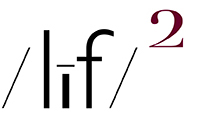all photos ~ (embiggenable)
A WELL KNOWN ART-WORLD PHOTOGRAPHER, WHEN DISCUSSING his formative years, stated:
…. at that time [ed. late 60s] photography was separated from the art world …. there were these 2 worlds …. 1.) the old photography world, a place described as a somewhat geeky realm of camera clubs and group critiques …. 2.) the art photography world, relegated mostly to photography galleries where people with different degrees of aesthetic interests, different intensionalities, and very different styles were all lumped together.
This past-history tidbit is indicative of the idea that the more things change. the more they stay the same, or, on other words, the same as it ever was inasmuch as I would suggest that; a.) the geeky camera club / group critique world still exists albeit floating around in the ethereal digital domain rather than in actual, physical meeting places, and, b.) the art photography world still exists in galleries albeit as an adjunct to its formative residency in academia.
iMo, the bedrock difference that distinguishes one world from the other is how each handles the idea of content; the camera club world considers content to be–in my mind, to a fault–the actual, literally depicted subject to be seen in a photograph whereas, in the art photography world paradigm, content is the concept, aka: meaning, behind a photograph. Or, think of it this way; one manner of picture making wants a viewer to see a literally documented something whereas the other picture making crowd wants you think about a visually intangible something.
DISCLOSURE if it ain’t clear to anyone who follows this blog, let me restate my position; I think the current Academic Lunatic Fringe fine art photography world is a batch of hooey, aka: flapdoodle and green paint. However, I am willing to concede to it the idea of different strokes for different folks (as long as no innocents are harmed in the making) END OF DISCLOSURE
In any event and all of that written, here’s the point of this entry; in my current pursuit of gallery exhibition possibilities I find myself betwixt and between the 2 photography worlds inasmuch as my photographs are about more than what is literally depicted–YIKES, sounds suspiciously like a concept–but, on the other hand, the intensionality behind their making is not about any mental idea / concept. Point in fact, my photographs are about extracting form from the quotidian world so that it can create a visual experience that can actually been seen*.
The difference between the camera club and art photography worlds creates a dilemma for me; the camera club world cannot begin to comprehend why I would take a picture of the “mess” in my kitchen sink. They look at me as if I had lobsters crawling out my ears. On the other hand, the ALF world looks at me and my photographs with a where’s the beef? expression on its face–hey you simple-minded twit, where’s the 5,000 word artist statement cuz we know it’s a picture of your kitchen sink but what does it mean?
OK, OK, that’s my problem but here’s a more universal consideration, re: how the ALF is fucking up your photography life; until about 15-50 years ago, one could go to NYC, Chelsea district, and within a 4 block area visit 30-40 photo galleries–mostly small to medium sized with a couple large ones–located in the 4-5 story buildings that lined the streets. Most of those galleries displayed straight / straight-ish photography. Long story short, that is all gone now.
Part of the reason they are gone is due to real estate reality–gentrification–in The Big City, . But, that granted, as support for gallery display of straight photography waned under the onslaught of the ALF wave, most “old photography” world galleries just flat-out disappeared–not just in NYC but throughout the country. In my experience, I can not remember when was the last time I viewed an exhibition of straight photography that was not a collection of either camera club cliches or a retrospective exhibition of the work of various greats from the last century.
More’s the pity.
PS don’t despair cuz next entry I’ll provide a source for locating–cutting through all the digital world clutter–some damn good straight photography.
*ya know, “seen”, cuz photography is a visual art.
